My Morning Chat with Mordicai . . .
 September 12th, 2013 by jules
September 12th, 2013 by jules
 Last week at Kirkus, I wrote here about Mordicai Gerstein’s newest picture book, The First Drawing, a book that is magical in more ways than one.
Last week at Kirkus, I wrote here about Mordicai Gerstein’s newest picture book, The First Drawing, a book that is magical in more ways than one.
Mordicai is visiting this morning to chat a bit about this book, as well as share some early sketches—I really love the sketch above, opening this post—and to provide a brief peek at the picture book he released earlier this year (April), How to Bicycle to the Moon to Plant Sunflowers.
I thank him for stopping by. Let’s get to it.
Jules: I wrote in my column that I think this is such a wonderful topic for a picture book. Can you talk about how this premise came to you, the genesis of this particular story?
Mordicai: The story started as a piece of performance art in my school presentations. I talk about how I started drawing when I was crawling around on the floor in diapers (when I was a baby, of course), found a crayon on the floor, and—instead of eating it—I started to draw on the floor — and have been drawing ever since. When the drawing is going well, I feel almost as if I were inventing drawing, which made me start to wonder who did invent it, and the first thought was that it had to be a child.
Then I tell the kids that it could be any one of them, if he or she had been born 30,000 years ago and lived in a cave. I then crumple the paper on my drawing pad to make it look like a bumpy cave wall and act out the making of the first drawing as it now happens in the book.
Jules: I like how the official Kirkus review writes, “Gerstein’s acrylic, pen-and-ink and colored-pencil mixed-media illustrations create depth and a sense of the past, as well as imparting liveliness and possibility to what could easily have become simply flat drawings.” How challenging (if at all) was it to bring that liveliness—which, indeed, you did so well—to so many interior cave drawings?
Mordicai: I try to make all of them lively. Some are more difficult than others. For me, each picture is one I’ve never done before, and so I have to learn how to make each one.
Then you dream you’re running with them, like one of them.”
(Click to enlarge)
Jules: I get goosebumps at the part in the book where the boy first draws the mammoth drawing on the cave wall. What does it mean to you, as an artist, to create a book about, essentially, the beginning of drawing?
Mordicai: I have always had a great love and respect for the art of drawing — and the people who practice it. No one has ever made better drawings than the ones at Chauvet, and they are so obviously European drawings. So, yes, this is a very important book for me, focusing on drawing and its source in the human imagination and how it allows us to share what we see.
[Here’s] an early jacket design from [The First Drawing] when the tentative title was, The Child Who saw What Wasn’t There. I really liked it, but we decided it was a bit too obscure and literary.
The dummy is really my early sketch book and, once I’ve done it, there are very few changes.
It’s not made of lights and shadows or clouds.
You can smell it, warm and musky.”
(Click to enlarge)
the wide-eyed children clutching their parents’ legs.
‘I can see it!’ gasps your father.
‘This…is MAGIC!’
‘No, Papa,’ you say. ‘I’m just showing you….'”
(Click to enlarge)
Jules: I also really liked How to Bicycle to the Moon to Plant Sunflowers [released by Roaring Brook Press in April].
Mordicai: Bicycling to the Moon went through many changes over many years from a pre-teen novel to a “How To” book. [Here’s] an early dummy page, followed by the final version…for contrast:


Jules: What’s next for you?
Mordicai: I just finished a book about a duck who grows jellybeans, called You Can’t Have Too Many Friends, and I’m now working on a book about the night and sunrise.
THE FIRST DRAWING. Copyright © 2013 by Mordicai Gerstein. Final art here is reproduced by permission of the publisher, Little, Brown and Company, New York. All other images used with permission of Mordicai Gerstein.
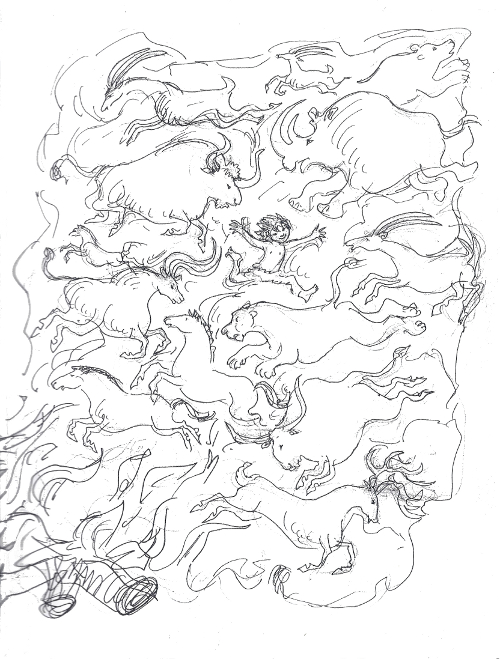
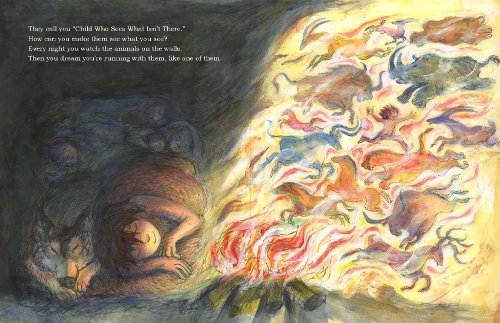
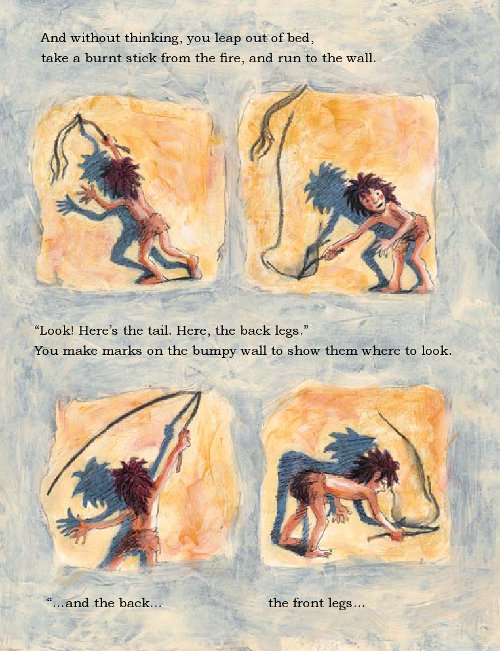
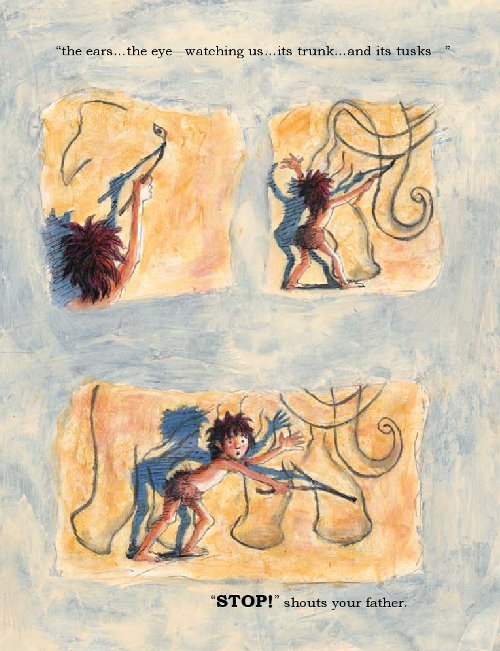
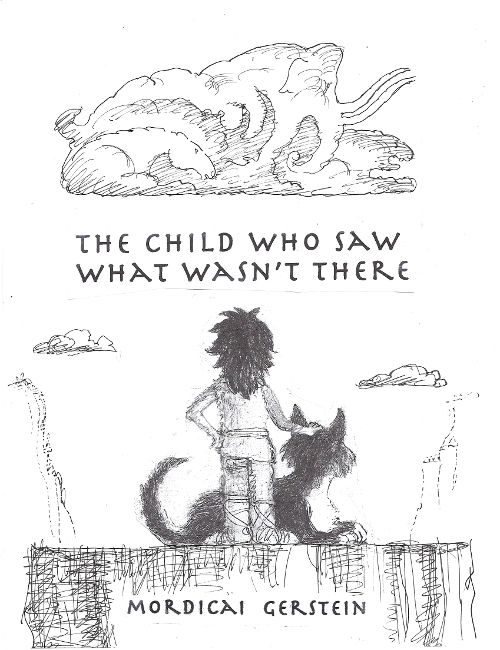
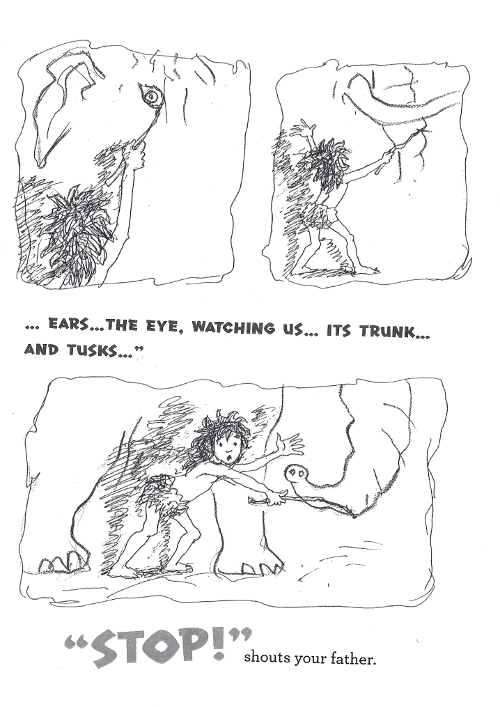
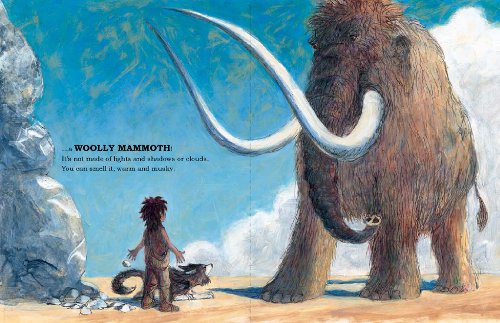
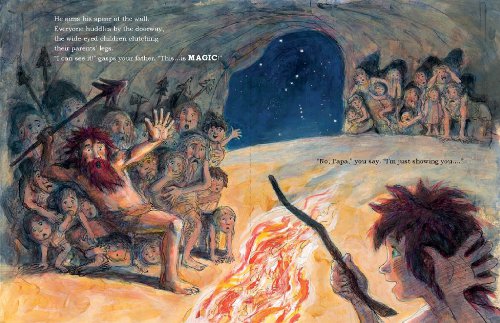


[…] week, I wrote here about Mordicai Gerstein’s The Sleeping Gypsy (Holiday House, October 2016) and Klaas Verplancke’s Magritte’s […]